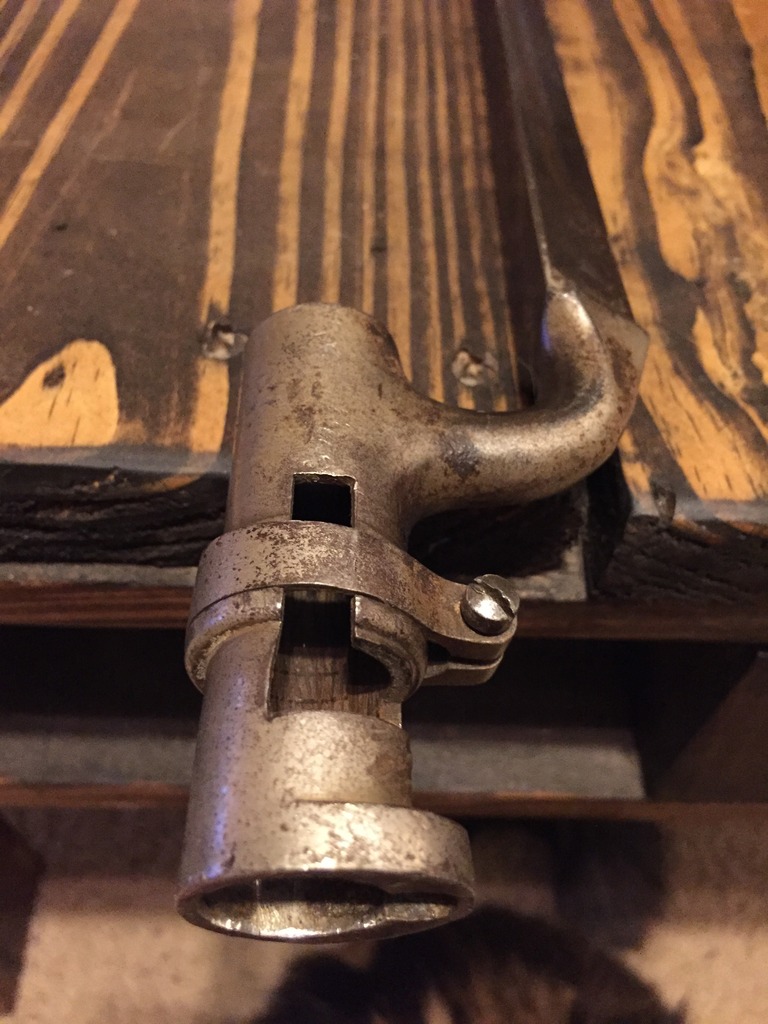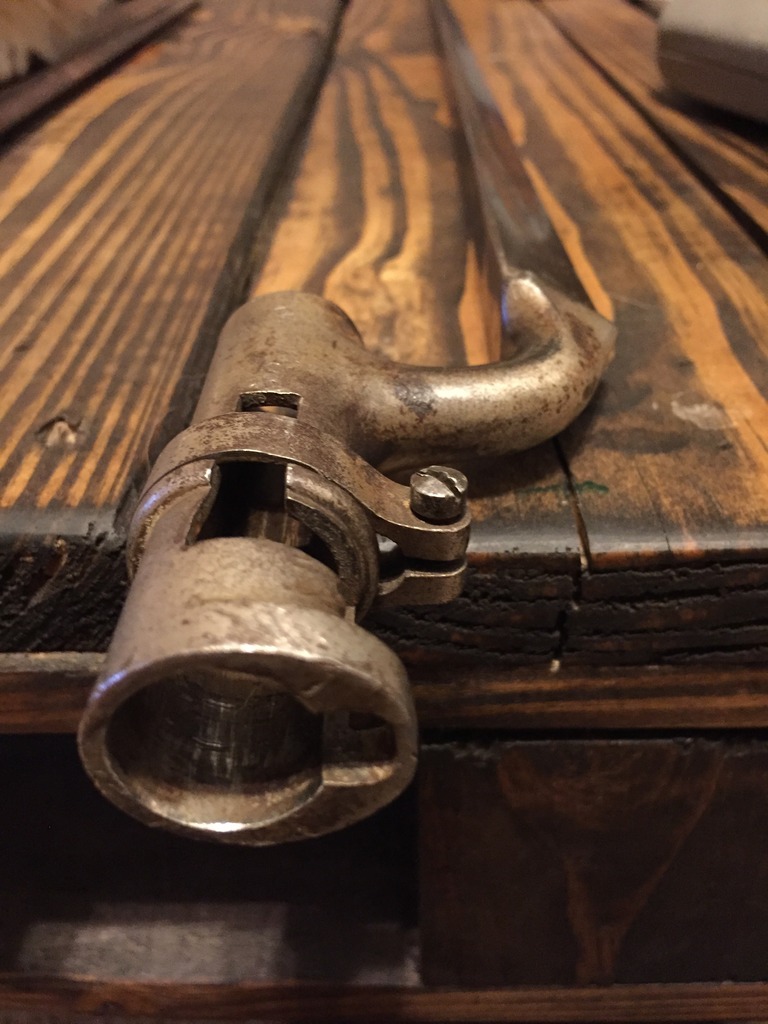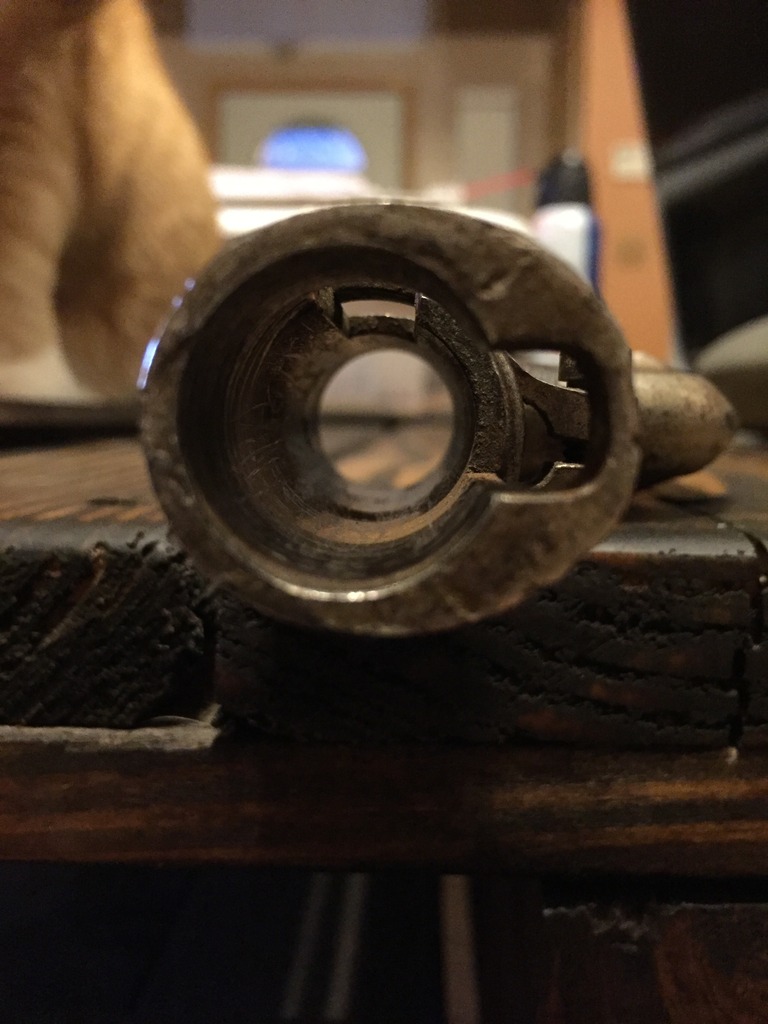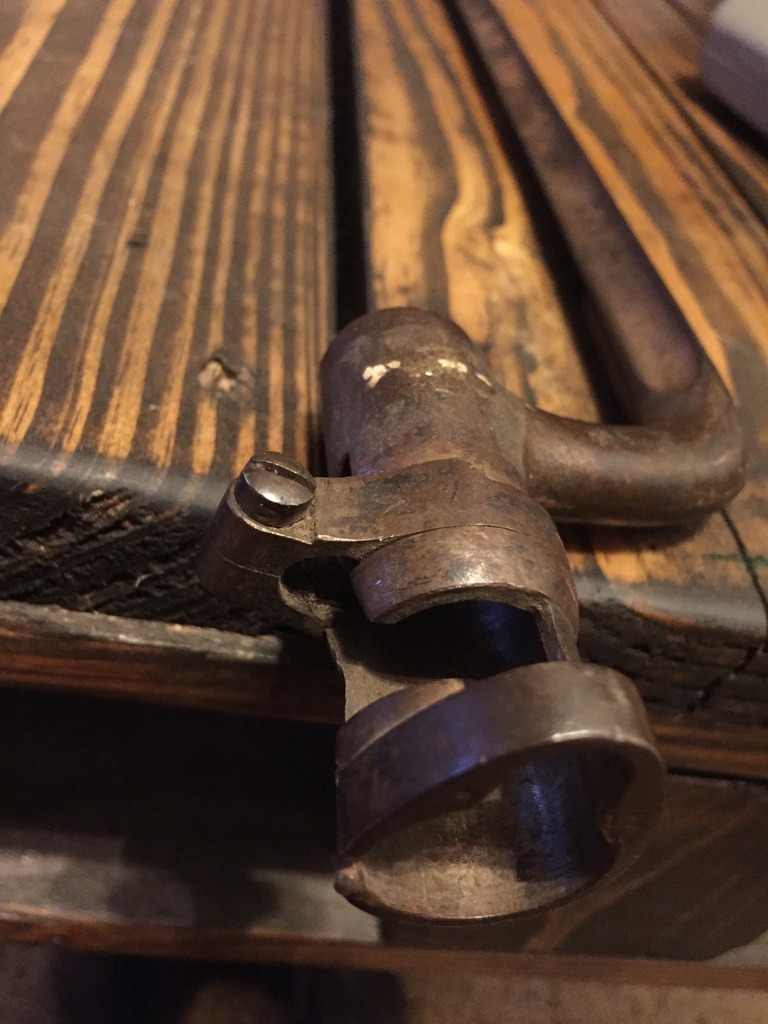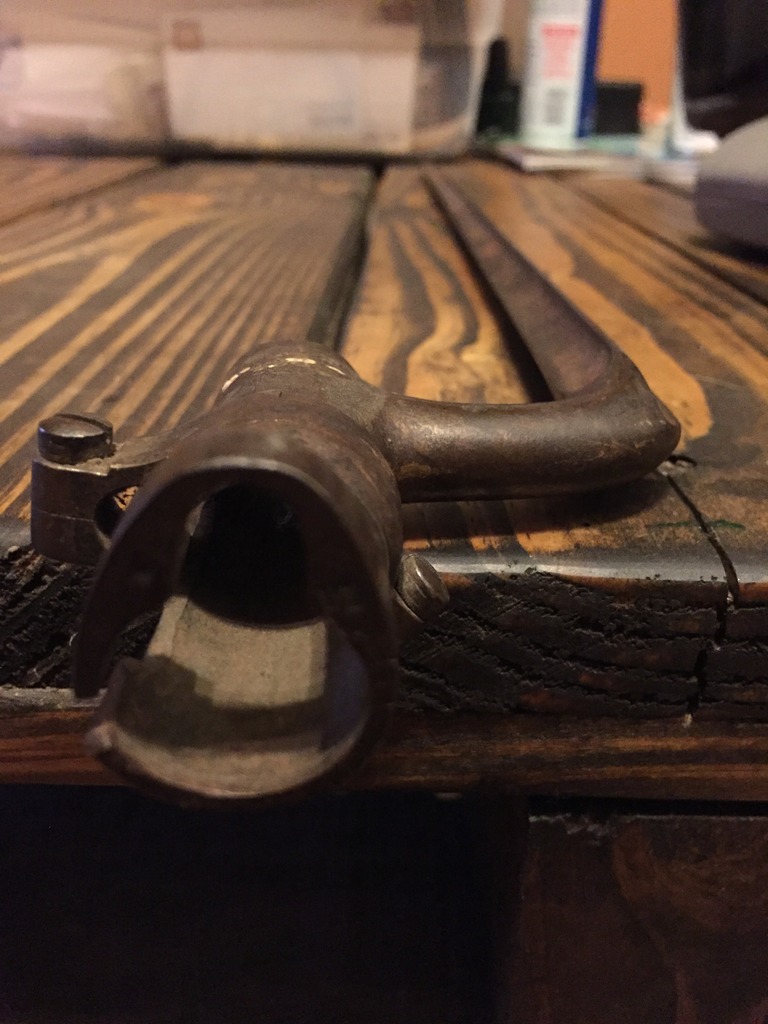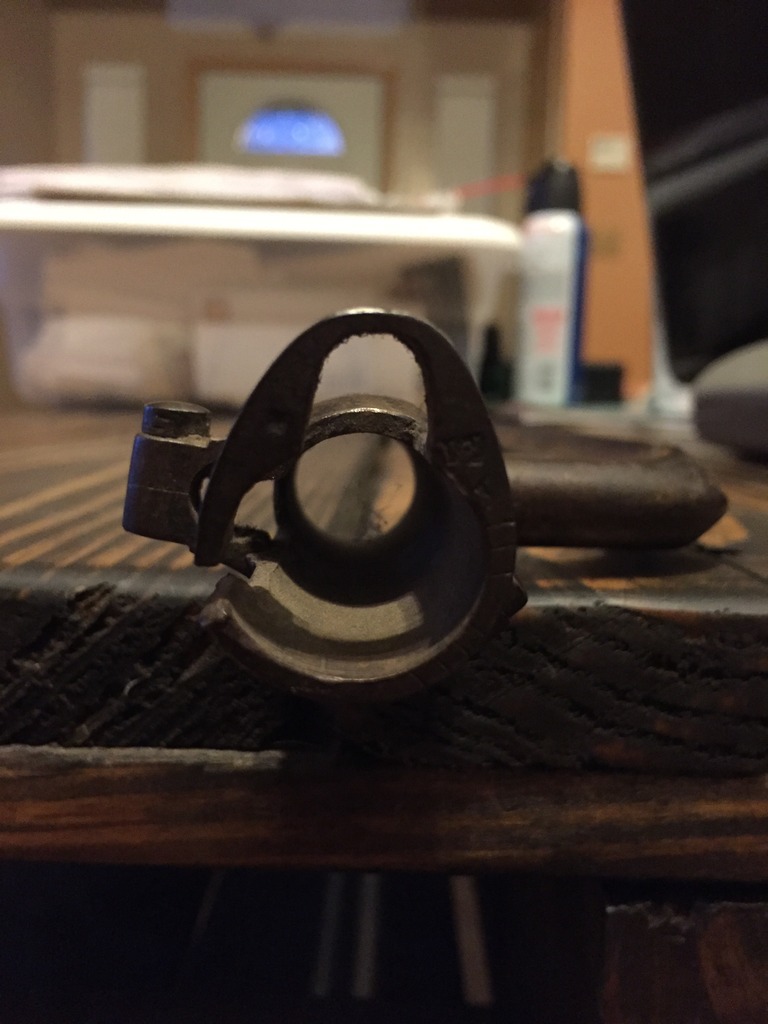I'm going through my stuff to see if I can identify it. I think the bottom one might be a Civil war era around 1860.
You are using an out of date browser. It may not display this or other websites correctly.
You should upgrade or use an alternative browser.
You should upgrade or use an alternative browser.
This site may earn a commission from merchant affiliate
links, including eBay, Amazon, and others.
There don't seem to be very many cruciform bayonets with locking rings so that makes searching on them a little easier. It looks like yours might be a Dutch Model 1871, first pattern, used in their Beaumont rifle. Overall length seems to be about right (just under 23") as does the socket and blade profile. Still a little iffy, but a Google image search for "dutch 1871 bayonet" looks promising.
I'll second coolhandluke's recommendation on the website:
http://worldbayonets.com/Bayonet_Identification_Guide/Netherlands/Netherlands_2.html look for M1871 First Pattern.
http://worldbayonets.com/Bayonet_Identification_Guide/Britian__Pre_WWII_/britain_pre_wwii_2.html look for Pattern 1895.
I'll second coolhandluke's recommendation on the website:
http://worldbayonets.com/Bayonet_Identification_Guide/Netherlands/Netherlands_2.html look for M1871 First Pattern.
http://worldbayonets.com/Bayonet_Identification_Guide/Britian__Pre_WWII_/britain_pre_wwii_2.html look for Pattern 1895.
Thanks for the help. I will take a couple of pics of the sockets when I get home and post them.I am no expert, but I do have a nice, heavily illustrated reference book on bayonets ("Bayonets: An Illustrated History" by Martin J. Brayley) so I can make believe.
The giveaway on the 25" triangular bladed bayonet is the Broad Arrow stamp (R over a wide arrowhead over WD) which indicates it is British. Poking through the photos I have of British bayonets it looks to me like it is either a Model 1876 or a Model 1895 (the 1895 is also referred to as an 1876/95). The 1876 was used with Martini-Henry rifles and the 1895 with the .303 Martini-Enfield. The book indicates that the 1895 is simply an 1876 with a bushing in the socket to fit the smaller diameter barrel of the Martini-Enfield. I can't see a bushing in the photos you provided but that might be the camera angle, take a look and that should help you decide which one you have. Both are spec'ed at 637mm in overall length, which almost exactly matches your 25" measurement.
The cruciform bayonet, however, has thus far defied my attempts at figuring out what it is. Still looking...
This is what I am hoping for. There was several battles in the area, so you can still find this stuff sometimes.I'm going through my stuff to see if I can identify it. I think the bottom one might be a Civil war era around 1860.
Based on the worldbayonets.com link and the latest photos, I'm calling the triangular-bladed bayonet a Pattern 1876 for use with the British Martini-Henry rifle chambered in .577/450. Could very well be wrong, but here is what jumps out at me (from worldbayonets): "Alterations [from a Pattern 1876 to 1895] include compressing the socket to the smaller diameter, filling the original mortise, and cutting a new mortise 90 degrees from the original to allow the bayonet to hang underneath the barrel when fixed. A filled portion of the original P1876 mortise is visible under bright light."
Based on the channel cut into the socket, it looks like the triangular-blade bayonet will be offset to the right (from the shooter's point of view) when fully installed, not underneath.
I'm still of a mind that the second (cruciform) bayonet is an 1871.
Sadly I'm not the old bayonet guru you asked for in the thread title, just an interested bystander. But I'm rapidly getting the "old" part down though...
Based on the channel cut into the socket, it looks like the triangular-blade bayonet will be offset to the right (from the shooter's point of view) when fully installed, not underneath.
I'm still of a mind that the second (cruciform) bayonet is an 1871.
Sadly I'm not the old bayonet guru you asked for in the thread title, just an interested bystander. But I'm rapidly getting the "old" part down though...
I greatly appreciate all the help. I just like old stuff like this. When we seen them my wife asked meBased on the worldbayonets.com link and the latest photos, I'm calling the triangular-bladed bayonet a Pattern 1876 for use with the British Martini-Henry rifle chambered in .577/450. Could very well be wrong, but here is what jumps out at me (from worldbayonets): "Alterations [from a Pattern 1876 to 1895] include compressing the socket to the smaller diameter, filling the original mortise, and cutting a new mortise 90 degrees from the original to allow the bayonet to hang underneath the barrel when fixed. A filled portion of the original P1876 mortise is visible under bright light."
Based on the channel cut into the socket, it looks like the triangular-blade bayonet will be offset to the right (from the shooter's point of view) when fully installed, not underneath.
I'm still of a mind that the second (cruciform) bayonet is an 1871.
Sadly I'm not the old bayonet guru you asked for in the thread title, just an interested bystander. But I'm rapidly getting the "old" part down though...
"What are they worth?".
I said " I have no idea. "
She then said " Are you going to buy them?"
I said "You know I'm going to buy them "
She said "Good" lol
She likes this old stuff too.
Similar threads
- Replies
- 4
- Views
- 294
- Replies
- 2
- Views
- 193
- Replies
- 23
- Views
- 944
Join the conversation!
Join today and get all the highlights of this community direct to your inbox. It's FREE!
- Curated content sent daily, so you get what's interesting to you!
- No ads, no large blocks of text, just highlights for easy digest
- It's all totally free!
Enter your email address to join:
Thank you for joining!
Already
a member? Click here to log in









